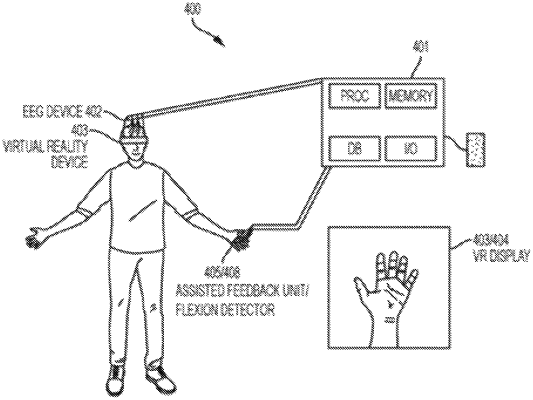| CPC G09B 5/02 (2013.01) [A61B 5/24 (2021.01); G06F 3/015 (2013.01); G06T 11/60 (2013.01); G09B 19/00 (2013.01)] | 20 Claims |

|
1. A method of providing virtual feedback of a neural pattern to create a neural pathway corresponding to an action of an affected limb of a physical therapy patient with brain injury, the method comprising:
detecting the neural pattern in response to the physical therapy patient attempting to perform a target action, wherein the neural pattern is detected using sensors in contact with the head of the physical therapy patient, and wherein the neural pattern includes a measurement of a pattern of activity in the brain of the physical therapy patient;
determining the target action to be associated with the neural pattern;
generating a virtual feedback including a virtual action corresponding to the target action, wherein the virtual action is to be performed in a virtual representation of the affected limb, and wherein the brain injury prevents the affected limb from performing the target action;
causing the virtual representation of the affected limb to be superimposed over a real-world presence of the affected limb such that the virtual representation of the affected limb is presented to the physical therapy patient in lieu of the real-world presence of the affected limb; and
performing the virtual action corresponding to the target action in the virtual representation of affected limb, such that the virtual action is presented to the physical therapy patient in lieu of the target action in the real-world.
|